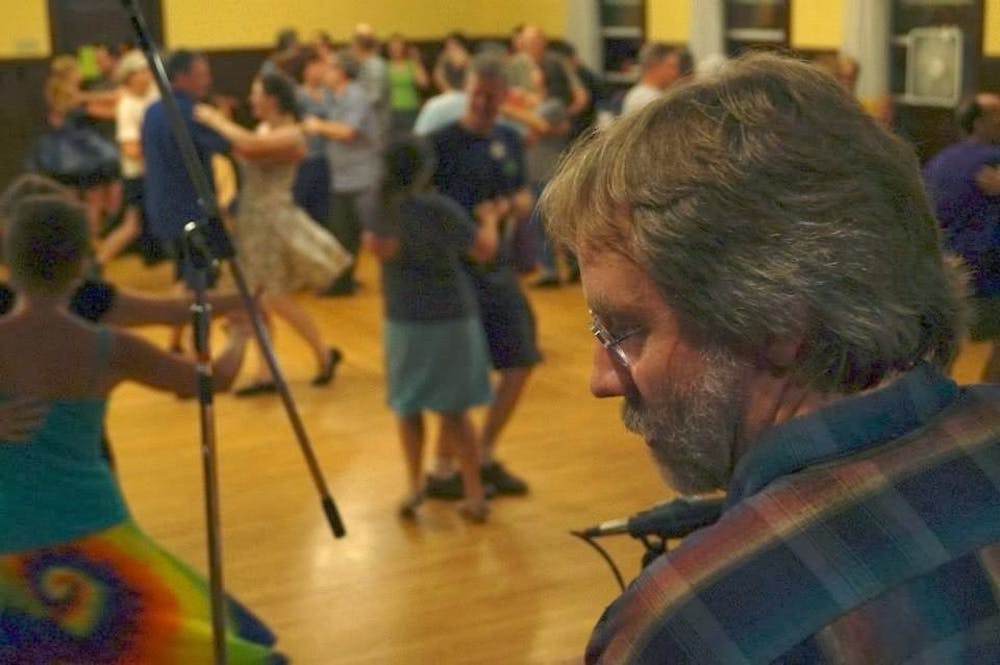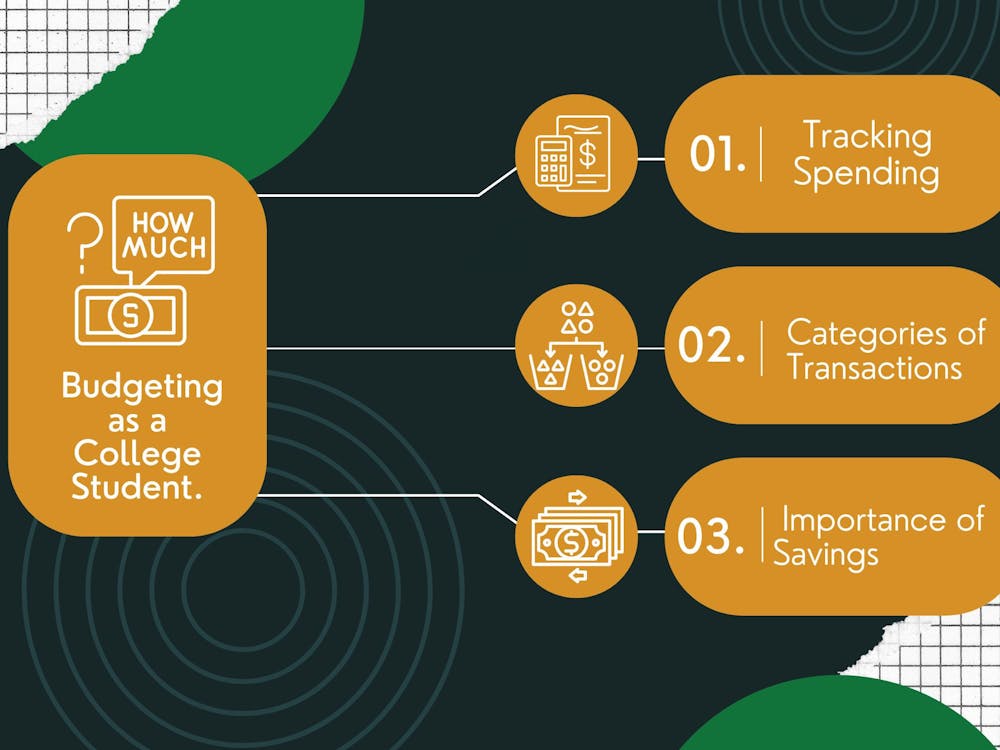By Maggie Smet |
For many students, the upcoming Dance of the Decades is a chance to show off their moves. But for others in the UP community, a different type of dance, with live music, called steps and smiling faces of all ages, is a weekly habit.
Contra dancing is a form of folk dance similar to square dancing. A dance caller will shout out steps that the dancers follow, all to live music. It is an energetic, walking-based dance that involves dancing with partners and nearby neighbors. Students and faculty members enjoy the welcoming atmosphere of the Portland contra dance scene, one of the most active and vibrant in the country.
Communications professor Jeff Kerssen-Griep plays bass in two contra dancing bands, Joyride and Wild Hair. Kerssen-Griep enjoys the creative outlet music plays in his life, as well as the connections contra dancing establishes between those involved.
“When you’re playing for contra dancing, you’ve got a band, dancers and dance callers who is teaching the dancing,” Kerrsen-Griep said. “It really depends on all three of those things circuiting up together and making more than the sum of its parts.”
Junior Anna Bubnova and nursing professor Susie Stragnell are also regular contra dancers, often attending the same events Kerrsen-Griep plays at.
Stragnell was initially invited to a contra dance by her friend, and was enticed by the promise of an interesting, different crowd of people.
“My friend told me, ‘Susie, this is where the real people are. These are not the beautiful people, these are the real people,’” Stragnell said.
Bubnova first heard of contra dancing as a freshman in Kerssen-Griep’s class, but waited until that spring to try it out. Though nervous, she was surprised by how much she enjoyed it. She went every Saturday that summer and hasn’t stopped.
She describes contra dancing “like the dancing in ‘Pride and Prejudice,’ but country,” with lots of spinning and eye contact with a partner.
Kerssen-Griep notes that this eye contact and physical connection between partners is an important part of contra dancing.
“People spend a lot of time looking at each other and holding each other and it doesn’t mean anything except ‘Here we are,’ which is so refreshing.” Kerssen-Griep said. “It’s just a reminder that we are humans connected to other humans.”
Bubnova has found the contra dancing community to be diverse, ready to accept all sorts of people and quick to laugh off mistakes.
Many contra dances have lessons for beginners, and Bubnova rhapsodized how willing more experienced dancers are in directing newcomers in the right direction, sometimes with a friendly push. Stragnell recommends newcomers wear comfortable shoes and lightweight clothes, as the dancing is very active.
“The dancers don’t have preconceptions about people,” Bubnova said. “You can be whoever you want to be and they’re just going to accept you. That's kind of what family does, isn’t it?”
What is Contra Dancing?
Contra Dancing is a folk dancing similar to square or line dancing. Steps are called while live music plays and dancers dance with a partner and their neighbors.
Places to go Contra Dancing: Saturdays at the Fulton Community Center, Beginners lesson start at 7:30 p.m., Dance from 8-11 p.m., 68 SW Miles Street, Portland, Ore. 97219 Price: $6 for students
First Wednesday of every month at the Polish Hall, 7:30-10 p.m., 3916 N Interstate Ave, Portland Ore. 97227 Price: $6 for students








